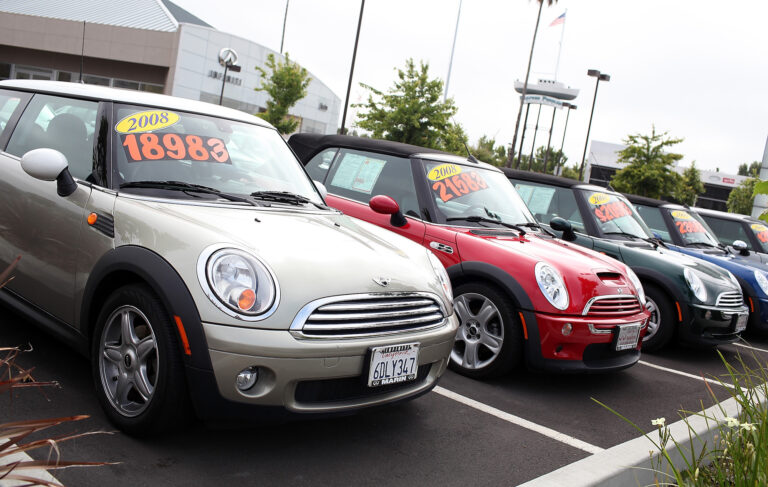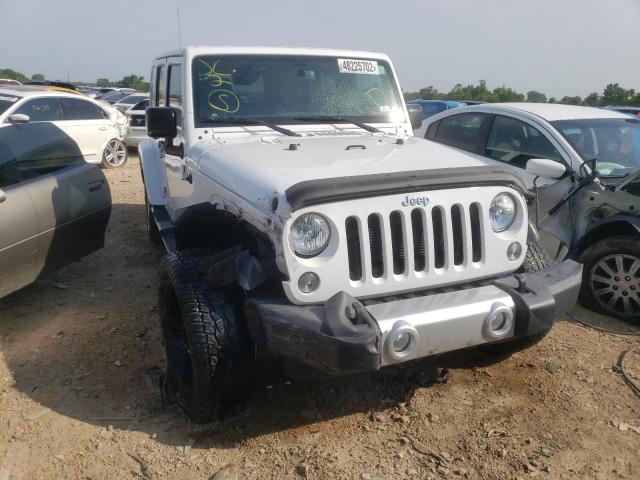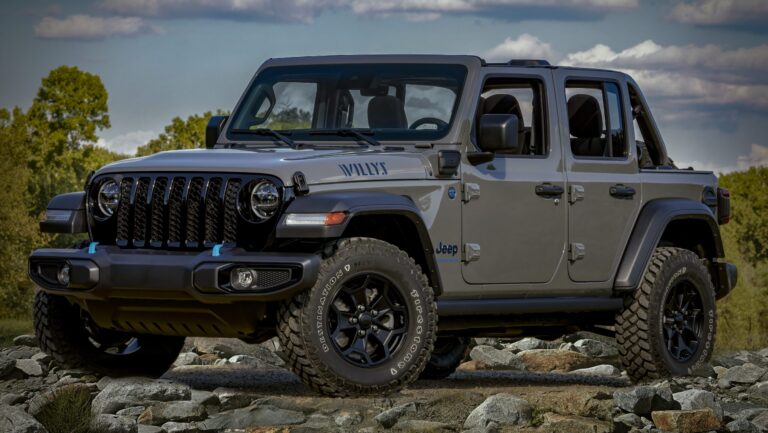Jeep CJ7 Chassis For Sale: Your Blueprint for an Off-Road Legend
Jeep CJ7 Chassis For Sale: Your Blueprint for an Off-Road Legend jeeps.truckstrend.com
Introduction: The Foundation of a Legend Reborn
The Jeep CJ7 holds an almost mythical status among off-road enthusiasts and classic vehicle collectors. Produced from 1976 to 1986, it perfectly blended the rugged simplicity of its predecessors with improved comfort and features, cementing its place as an iconic American vehicle. While complete CJ7s are highly sought after, many have fallen victim to the ravages of time, rust, or extreme off-road abuse, leaving their frames compromised. This is where the concept of a "Jeep CJ7 Chassis For Sale" becomes incredibly significant.
Jeep CJ7 Chassis For Sale: Your Blueprint for an Off-Road Legend
For many, acquiring a standalone CJ7 chassis isn’t just about buying a piece of metal; it’s about laying the foundation for a dream. Whether you’re undertaking a meticulous restoration project, building a custom rock-crawler from the ground up, or creating a unique restomod that blends vintage charm with modern performance, the chassis is your starting point. It’s the skeleton upon which the entire vehicle is built, dictating its structural integrity, handling characteristics, and ultimately, its longevity. Understanding what to look for, where to find it, and what to expect is crucial for anyone embarking on this exciting journey.
The Enduring Appeal of the Jeep CJ7
Before diving into the specifics of chassis acquisition, it’s worth appreciating why the CJ7 continues to captivate. Its timeless design, removable doors and top, and legendary off-road capability make it a true icon. The CJ7 struck a perfect balance between the shorter wheelbase CJ5 and the longer CJ8 Scrambler, offering maneuverability on trails while providing enough interior space for comfort. Its simplicity of design also means a vast aftermarket parts industry and a strong community of passionate owners, making it an ideal candidate for restoration and customization projects.
Why Buy a Standalone CJ7 Chassis?
The decision to purchase a bare or rolling CJ7 chassis, rather than a complete vehicle, typically stems from several key motivations:
- Restoration of a Damaged Vehicle: Many CJ7 bodies might be salvageable, but their frames are too far gone due to severe rust, accident damage, or fatigue from years of off-roading. A new or refurbished chassis provides a solid, safe base to transfer the existing components onto.
- Custom Build or Restomod Project: For those looking to create a truly unique vehicle, starting with just the chassis offers unparalleled freedom. You can choose your desired drivetrain, suspension, and body components without being constrained by an existing vehicle’s condition or configuration.
- Dedicated Off-Road or Competition Vehicle: Building a purpose-built trail rig or competition vehicle often necessitates a strengthened, modified, or entirely new chassis designed to withstand extreme forces and accommodate specialized components.
- Learning and Hobby Project: For aspiring mechanics, welders, or fabricators, a chassis project provides an excellent hands-on learning experience, allowing them to understand vehicle dynamics and construction from the ground up.
- Cost-Effectiveness (Potentially): In some cases, acquiring a chassis and sourcing components individually can be more cost-effective than buying a complete, running CJ7, especially if the latter requires extensive frame repair anyway.

What to Look For When Buying a CJ7 Chassis
The chassis is the backbone of your vehicle; its condition is paramount. Thorough inspection is non-negotiable.
1. Rust: The Ultimate Enemy
Rust is the primary killer of vintage Jeep frames. Pay meticulous attention to:
- Frame Rails: Especially the bottom and inside surfaces, where water and debris collect. Look for bubbling, flaking, or outright holes.
- Crossmembers: These connect the frame rails and are prone to rust, particularly where they meet the rails.
- Body Mounts: These are critical attachment points for the body. Rusted mounts can lead to body sag, misalignment, and safety issues.
- Spring Perches and Shackle Mounts: These areas experience significant stress and are often rust traps.
2. Straightness and Alignment
A bent or twisted frame is incredibly difficult, if not impossible, to correct properly.
- Accident Damage: Look for signs of impacts, kinks, or severe creasing, especially near the front or rear bumper mounts.
- Off-Road Abuse: Check for evidence of rocks or obstacles hitting the frame, causing dents or bends.
- Symmetry: Visually inspect the frame from all angles. Measure diagonally from fixed points to ensure it’s square. A professional frame shop can perform precise measurements.
3. Previous Repairs or Modifications
- Welding Quality: Look for clean, consistent welds. Poor, "bird-poop" welds indicate amateur work and potential weakness.
- Reinforcement Plates: While some reinforcement can be good, excessive plating might hide severe underlying damage or poorly executed repairs.
- Engine/Transmission Mounts: Ensure they are intact and correctly positioned for your intended drivetrain.
4. Completeness
Chassis can range from a bare frame to a "rolling chassis."
- Bare Frame: Just the metal frame. You’ll need to source everything else (axles, suspension, steering, etc.).
- Rolling Chassis: Includes the frame, axles, suspension (leaf springs, shocks), steering box, and sometimes wheels/tires. This can save time and effort but requires more careful inspection of included components.
5. VIN Matching and Documentation
Crucially, ensure the chassis comes with a clear title or bill of sale, and that the VIN stamped on the frame (usually on the passenger side frame rail near the front shackle) matches any provided documentation. This is vital for legal registration and avoiding future headaches.
Types of CJ7 Chassis Available
The market offers a few distinct options when seeking a CJ7 chassis:
- Original/Used Chassis:
- Pros: Authenticity, potentially lower initial cost, readily available.
- Cons: Condition varies wildly, almost guaranteed to have some rust or minor damage, requires extensive inspection and likely repair/restoration work.
- Refurbished/Restored Chassis:
- Pros: Frame has been stripped, inspected, repaired (if needed), sandblasted, and painted/powder-coated. Saves significant prep time.
- Cons: Higher cost due to labor and materials involved in the restoration process.
- Aftermarket/Reproduction Chassis:
- Pros: Brand new steel, no rust, often built with thicker gauge steel or improved design elements (e.g., better crossmembers, integrated skid plates). Perfect for a truly custom build or if absolute structural integrity is paramount.
- Cons: Highest cost, not "original" if authenticity is your goal, may require minor modifications for certain vintage components.
Where to Find a CJ7 Chassis For Sale
Your search for the perfect chassis can take you to several places:
- Online Marketplaces: eBay, Craigslist, Facebook Marketplace are common spots. Be wary of listings without detailed photos or clear descriptions.
- Specialized Jeep Forums and Facebook Groups: Communities like "Jeep CJ Parts For Sale" or "CJ7 Restoration Group" are excellent resources. Members often sell parts or can point you to reputable sellers.
- Salvage Yards/Junkyards: A classic treasure hunt. You might find a complete donor vehicle or just a usable frame, but condition will be a major variable.
- Restoration Shops/Dealers: Some dedicated Jeep restoration shops might have frames for sale or know where to source them. They often deal in higher-quality, pre-inspected units.
- Dedicated Aftermarket Manufacturers: Companies like Throttle Down Kustoms, Frame Up Restoration, or some parts suppliers specialize in new reproduction frames.
The Process of Buying and Transporting a Chassis
- Thorough Inspection: If at all possible, inspect the chassis in person. Bring a tape measure, a magnet (to check for body filler over rust), and a flashlight. If an in-person inspection isn’t possible, request high-resolution photos and videos from every angle, and ask specific questions about problem areas.
- Negotiation: Be prepared to negotiate, especially for used frames. The price should reflect the condition and completeness.
- Payment: Use secure payment methods. Avoid wire transfers for unknown sellers.
- Logistics: A bare frame is heavy and awkward.
- Local Pickup: Best if feasible. You’ll need a suitable trailer (utility trailer, car hauler) and straps.
- Freight Shipping: For longer distances, freight shipping is necessary. Get quotes from multiple carriers. The chassis will need to be properly crated or secured to a pallet. Factor in liftgate services if you don’t have a forklift.
Tips for a Successful CJ7 Chassis Project
- Plan Thoroughly: Before buying, outline your entire project. What kind of CJ7 do you want to build? What components will you use? This will help you select the right chassis.
- Budget Realistically: Beyond the chassis cost, factor in shipping, potential repairs, sandblasting, paint/powder coat, and the cost of all other components (axles, suspension, engine, transmission, body, etc.).
- Consider Your Skill Level: Are you comfortable with welding, grinding, and heavy lifting? If not, factor in professional labor costs.
- Join Online Communities: The Jeep community is incredibly helpful. Forums and social media groups are invaluable for advice, parts sourcing, and troubleshooting.
- Document Everything: Take photos and notes throughout the build process. This helps with troubleshooting, remembering modifications, and is valuable if you ever decide to sell.
Potential Challenges and Solutions
- Finding a Good Condition Chassis: Patience is key. Expand your search radius, monitor online listings regularly, and network within the Jeep community.
- High Shipping Costs: Look for sellers closer to your location. Consider coordinating with others to share a freight shipment if possible. Sometimes, the cost of a slightly more expensive, locally available chassis is offset by saving on shipping.
- Unforeseen Damage/Rust: Even with thorough inspection, you might uncover issues. Build a contingency fund into your budget to cover unexpected repairs.
- Legal/VIN Issues: Always verify VIN documentation upfront. If a chassis lacks a clear title or matching VIN, it could lead to significant registration problems. In some states, building a vehicle from a bare frame requires specific inspections and assignment of a "reconstructed" or "assembled" vehicle VIN. Research your local DMV requirements before purchase.
Table Price: Estimated Costs for Jeep CJ7 Chassis For Sale
Prices for Jeep CJ7 chassis vary significantly based on condition, completeness, location, and seller. The following table provides a general range for different types of chassis. These are estimates and subject to change based on market demand and specific factors.
| Chassis Type/Condition | Description | Estimated Price Range (USD) | Key Factors Influencing Price |
|---|---|---|---|
| Used Bare Frame (Needs Work) | Significant rust, bends, or previous poor repairs. Requires extensive work. | $300 – $800 | Extent of damage, local availability, seller’s motivation. |
| Used Bare Frame (Good Condition) | Minimal surface rust, straight, no major damage. Ready for sandblasting/paint. | $800 – $1,500 | Rust level, straightness, VIN documentation, demand. |
| Used Rolling Chassis (Needs Work) | Frame needs work; axles, suspension, steering may need rebuilding/replacing. | $1,000 – $2,500 | Condition of frame and included components, drivetrain type (if any). |
| Used Rolling Chassis (Good Condition) | Straight frame, axles and suspension in fair to good working order. | $2,500 – $4,500+ | Condition of all components, completeness, type of axles (e.g., AMC 20 vs. Dana 44). |
| Refurbished/Restored Frame | Stripped, repaired, blasted, painted/powder-coated. No components. | $2,000 – $4,000 | Quality of restoration, type of coating, reputation of restorer. |
| Aftermarket Reproduction Frame | Brand new, often thicker steel, improved design. No components. | $3,500 – $6,000+ | Manufacturer, material gauge, additional features (e.g., skid plate mounts). |
Note: These prices do not include shipping costs, which can range from a few hundred to over a thousand dollars depending on distance and carrier.
Frequently Asked Questions (FAQ)
Q1: Is it legal to build a vehicle on a new or used standalone chassis?
A1: Yes, it is generally legal, but the process varies significantly by state/country. You will likely need to register it as a "specially constructed," "assembled," or "reconstructed" vehicle. This often involves inspections, proof of ownership for all major components (especially the chassis VIN), and sometimes an assigned VIN from the DMV. Always check your local Department of Motor Vehicles (DMV) or equivalent agency’s specific requirements before starting your project.
Q2: How much does a bare CJ7 chassis weigh?
A2: A bare CJ7 frame typically weighs between 250 to 350 pounds (approx. 113-159 kg), depending on its completeness (e.g., if crossmembers are still attached, or if it has any integrated skids). A rolling chassis with axles, springs, and tires will be significantly heavier, potentially 800-1200 pounds (approx. 360-540 kg) or more.
Q3: Can I use a CJ5 chassis for a CJ7?
A3: No, a CJ5 chassis is shorter than a CJ7 chassis. The CJ5 has an 81-inch wheelbase (later 83.5 inches), while the CJ7 has a 93.5-inch wheelbase. The bodies are not interchangeable without significant frame and body modifications.
Q4: What’s the average cost for a decent CJ7 chassis?
A4: Based on our table, a "decent" used bare frame that’s straight and has minimal rust might cost between $800 and $1,500. If you’re looking for a good rolling chassis, expect to pay $2,500 to $4,500+. Aftermarket reproduction frames are the most expensive, starting around $3,500. Remember, these prices don’t include shipping.
Q5: Do I need a VIN with the chassis?
A5: Absolutely yes. The VIN stamped on the frame is the legal identity of the vehicle. Without it, or clear documentation linking the frame to a VIN (like a title or bill of sale that explicitly states the VIN), you will face significant challenges, if not outright impossibility, in registering your completed vehicle. Ensure the VIN on the frame is legible and matches any provided paperwork.
Q6: What’s the difference between a rolling chassis and a bare frame?
A6: A bare frame is just the metal skeleton – the two main rails and crossmembers. A rolling chassis includes the frame, but also typically has the axles, leaf springs, shocks, steering box, and sometimes wheels and tires attached, making it movable on its own wheels.
Conclusion: Building Your CJ7 Legacy
The pursuit of a Jeep CJ7 chassis for sale is more than a simple transaction; it’s the critical first step in bringing a beloved classic back to life or forging a new off-road legend. Whether you envision a faithful restoration, a beefed-up trail monster, or a comfortable daily driver with vintage appeal, the quality of your chassis will dictate the success and safety of your project.
While the journey of finding, acquiring, and building upon a CJ7 chassis can present its challenges, the rewards are immense. The satisfaction of transforming a collection of parts into a roaring, capable vehicle, knowing you laid its very foundation, is unparalleled. With careful planning, diligent inspection, and a healthy dose of passion, your dream CJ7 will soon be rolling, ready for the adventures that await.




